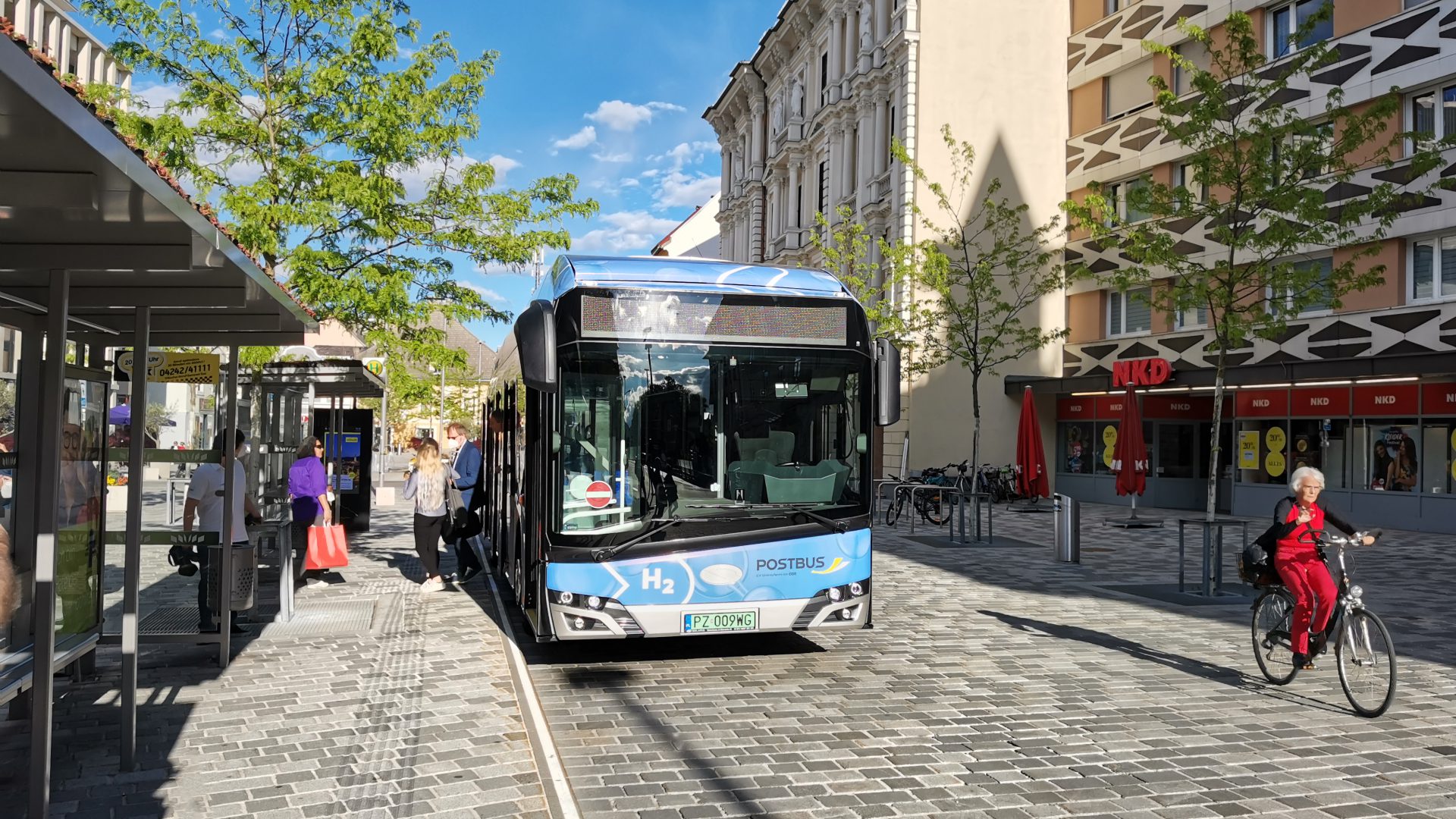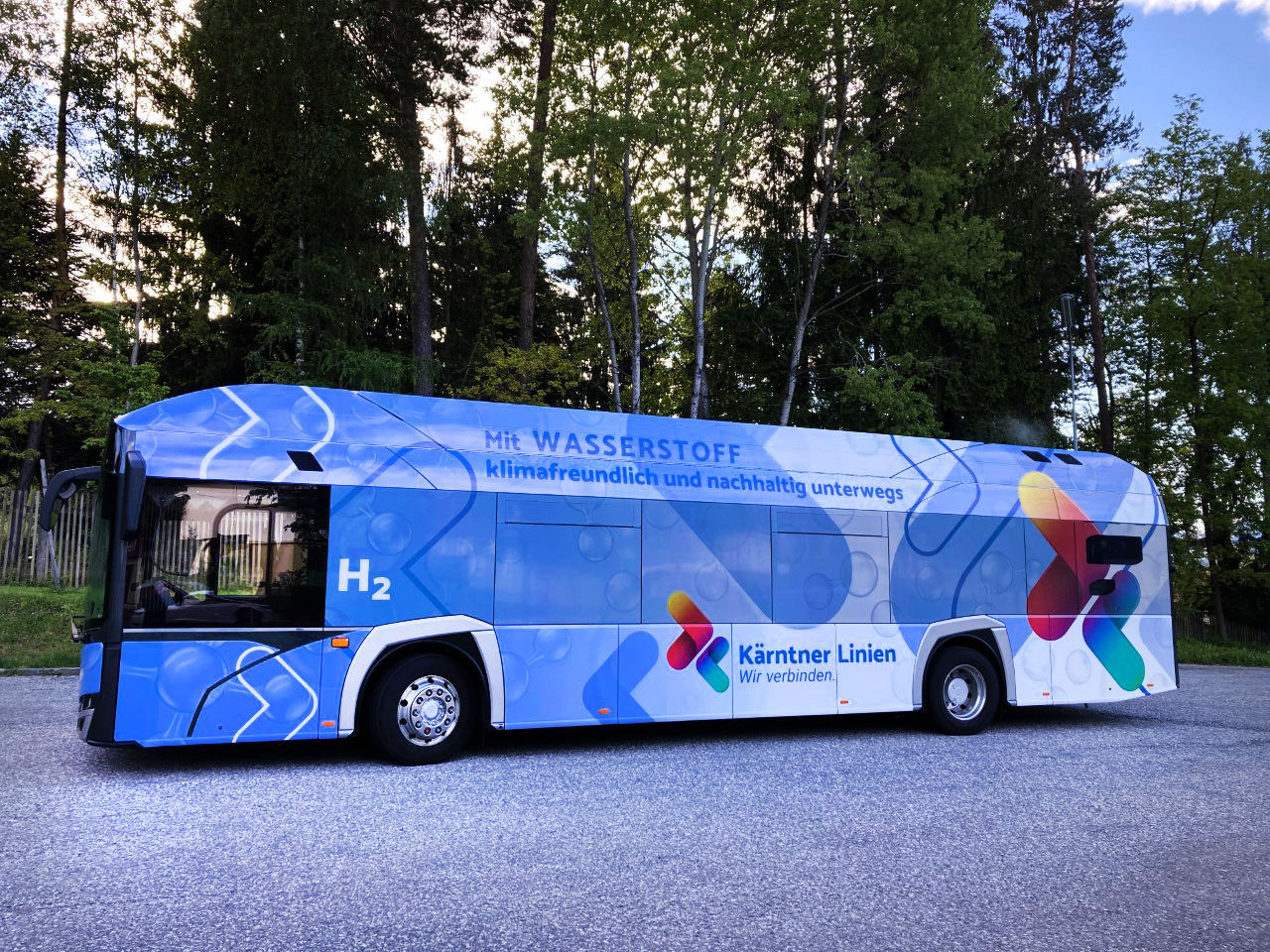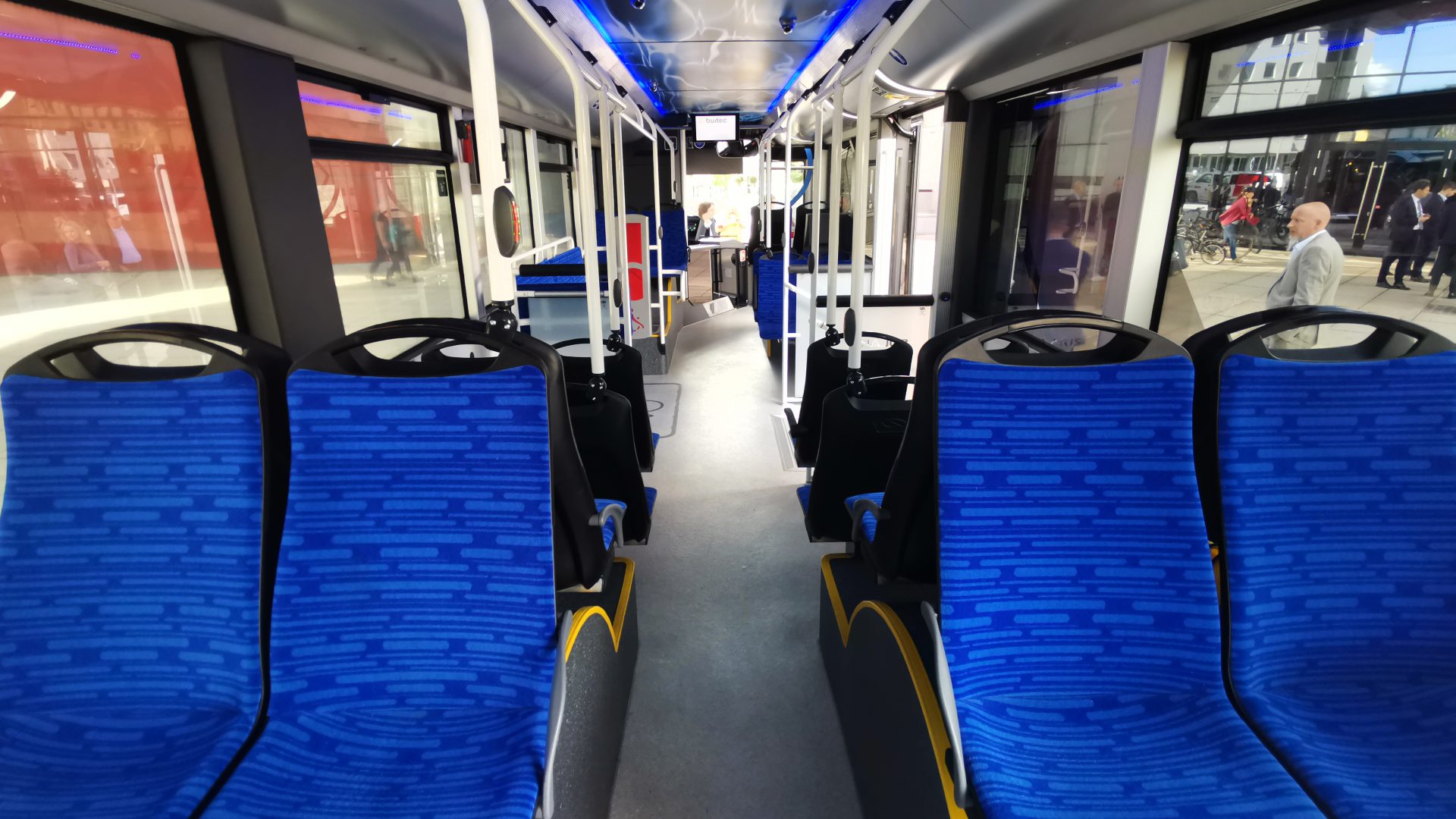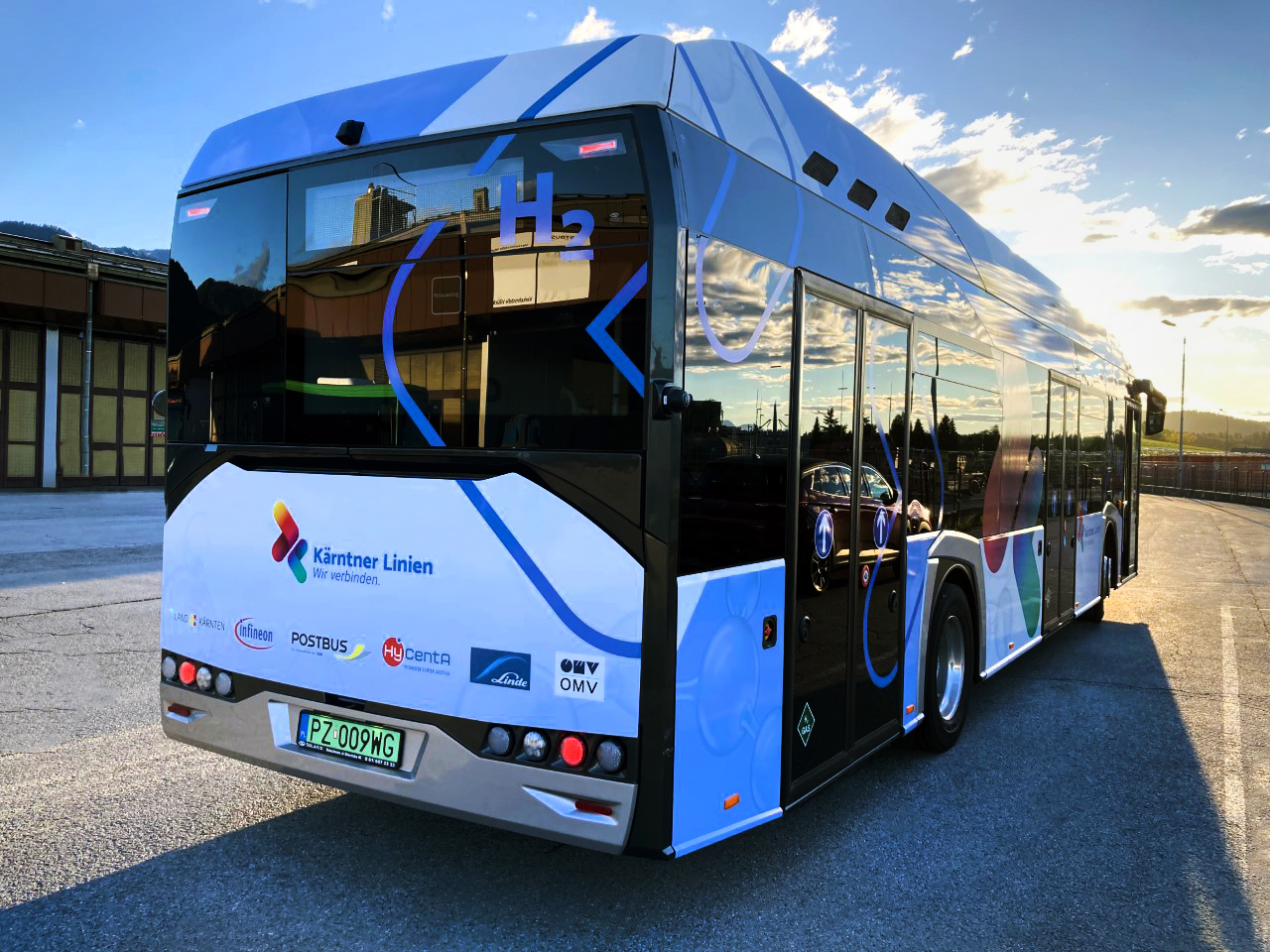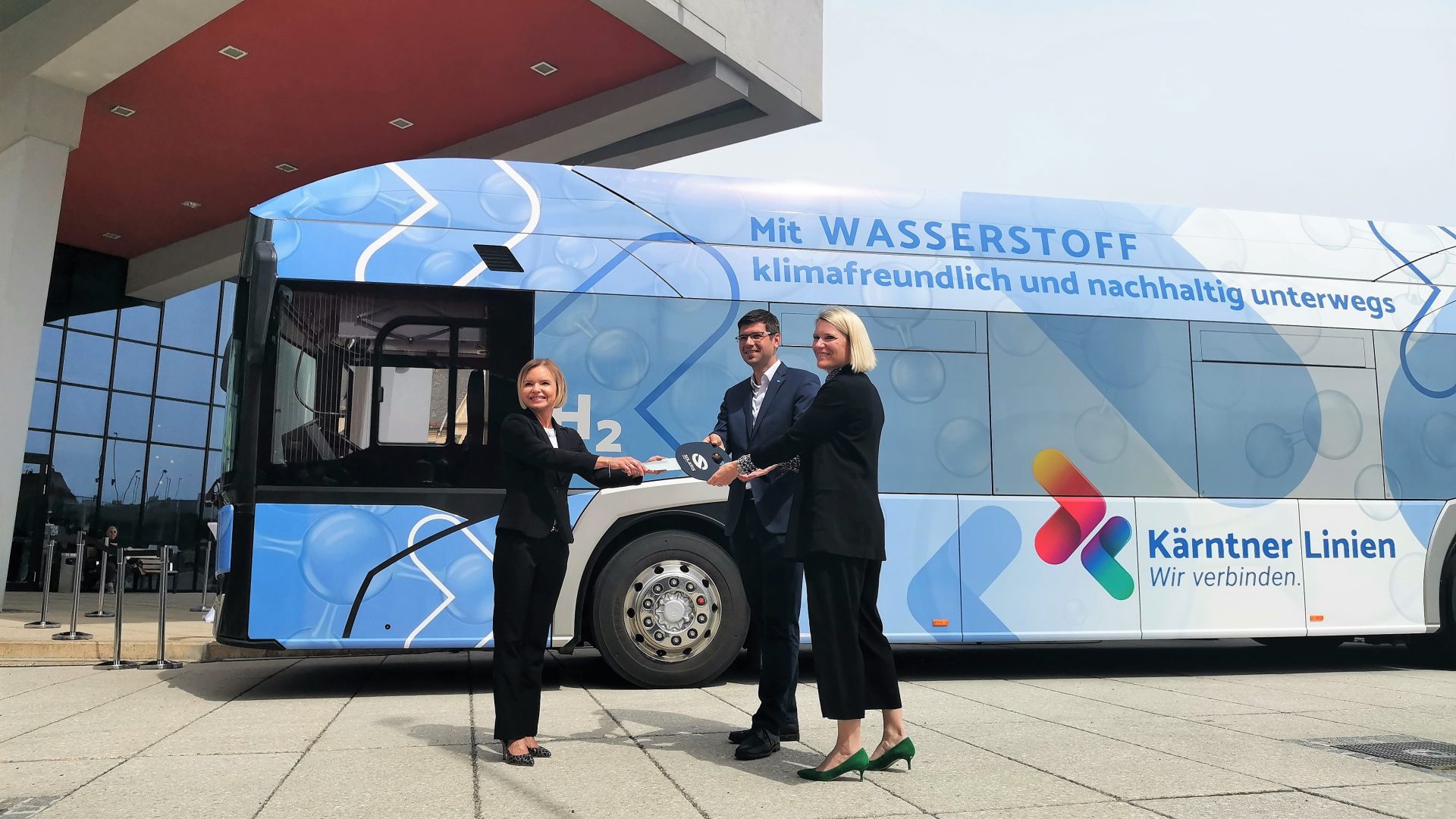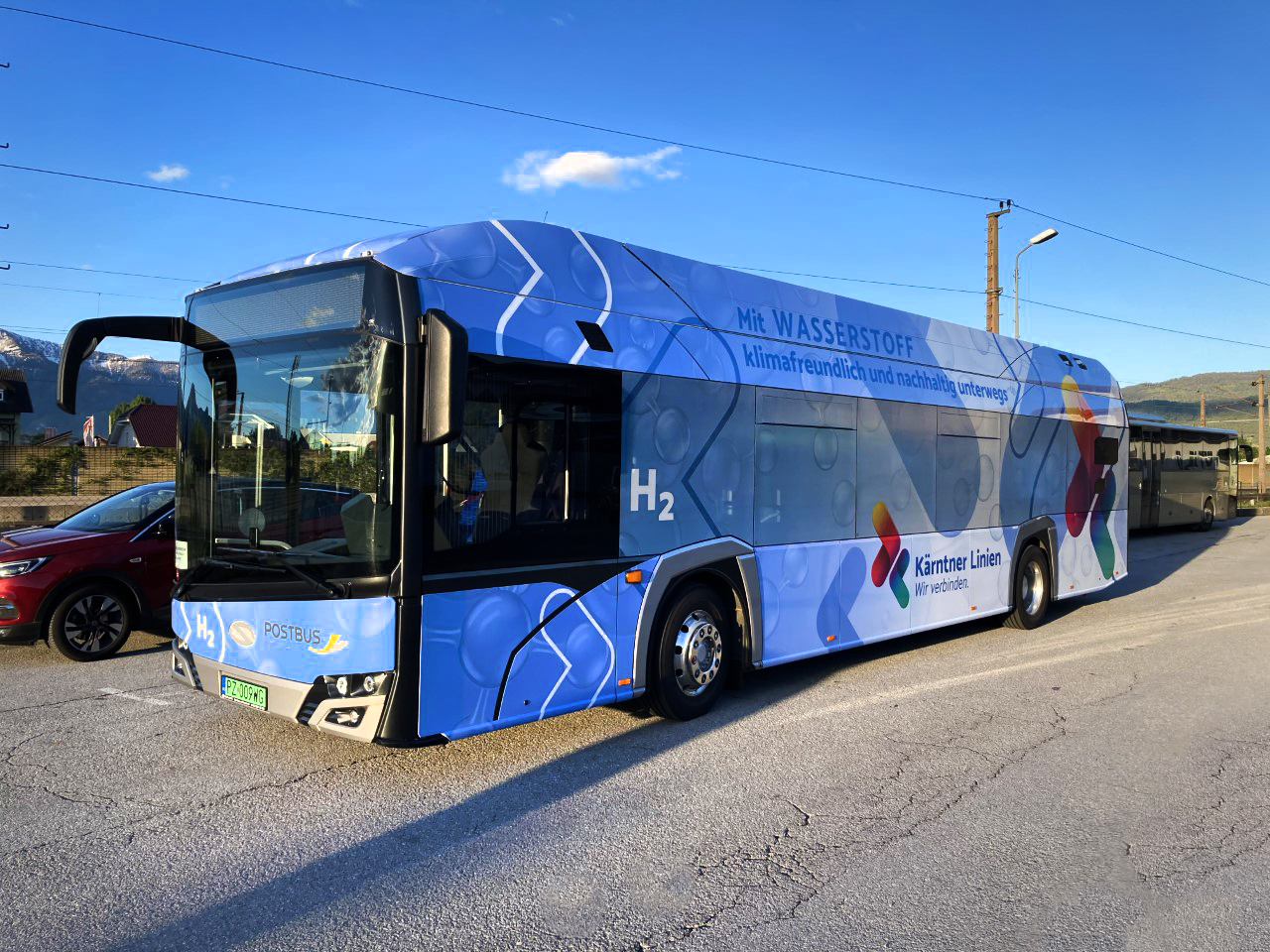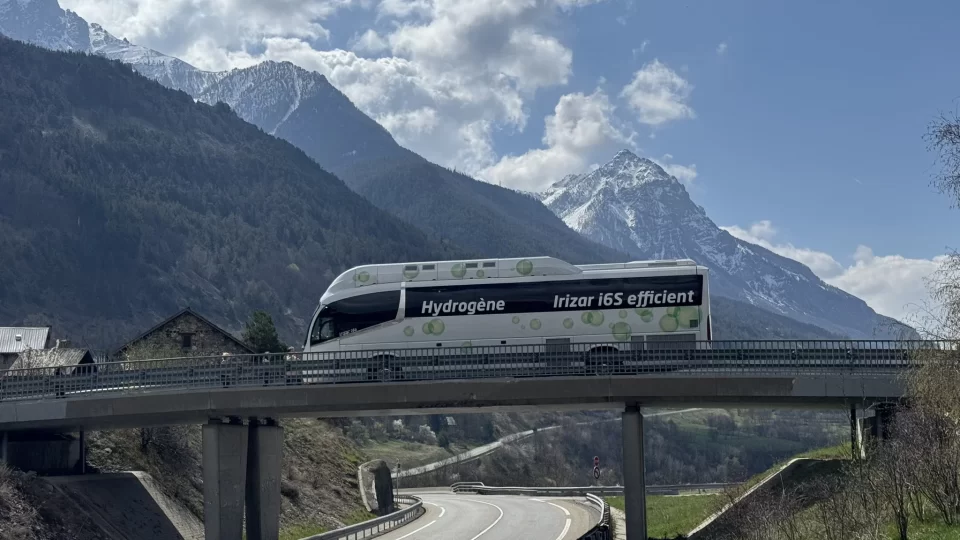Another city, another pilot. Solaris fuel cell bus on a test in Villach (Austria)
The hydrogen-powered Solaris Urbino hydrogen bus has been cruising on the streets of Villach, picturesque towns of the Austrian province of Carinthia for a few days now. Solaris has kicked off the presentation of its hydrogen-fuelled vehicle and, as a result, representatives of regional authorities and local transport operators are now able to learn more about the technology featured in that vehicle. At a conference held in Villach, representatives of the federal land of Carinthia and of […]
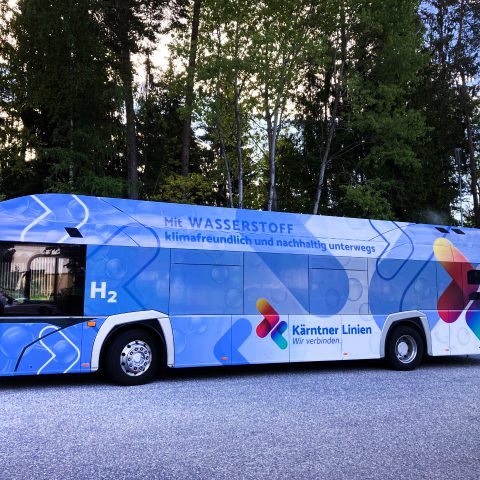
The hydrogen-powered Solaris Urbino hydrogen bus has been cruising on the streets of Villach, picturesque towns of the Austrian province of Carinthia for a few days now. Solaris has kicked off the presentation of its hydrogen-fuelled vehicle and, as a result, representatives of regional authorities and local transport operators are now able to learn more about the technology featured in that vehicle.
At a conference held in Villach, representatives of the federal land of Carinthia and of operator ÖBB Postbus talked about their plans to purchase hydrogen buses. This ultramodern and completely emission-free bus model has been raising a lot of interest among local carriers.
A batch of 15 units is headed to Cologne, another 20 will make their way in the Netherlands. 12 Solaris Urbino hydrogen have been recently launched in Bolzano.
Villach witness the Solaris Urbino hydrogen in operation
From 20 to 21 May the Austrian town of Villach hosted a conference of Solaris, the purpose of which was to present the hydrogen bus of the company. Co-organised by the local representation of the company – Solaris Austria – the meeting marked the symbolic launch of a cycle of tests of that model performed by Austrian urban transport operators. The test drives of the hydrogen Urbino will last until the end of May.
Attended among others by representatives of Solaris Bus & Coach, Solaris Austria, local operator ÖBB Postbus, Carinthian regional authorities and international media, the event provided a great opportunity to learn more about the state-of-the-art technology applied by the manufacturer in the hydrogen vehicle. A detailed presentation of the bus was achieved through a series of speeches delivered by experts who talked about the advantages of hydrogen as a clean source of energy, as well as by means of test rides that allowed to assess the performance parameters of the bus and its potential in regular use.
“Zero-emission buses are the future of public transport, and there is no doubt of that. As one of the largest manufacturers of city transport vehicles in Europe, we feel responsible for setting trends whose main criterion is our care for the environment and for the comfort of city dwellers. We are happy that a growing number of countries are eyeing hydrogen technology, which is a superb, green solution supplementing the electromobility offer of the company,” declared Javier Calleja, CEO of Solaris Bus & Coach, also present at the conference.
“I am glad that we may once again present our hydrogen bus in Austria; it will serve as direct proof of the advantages of that drive. This technology yields great operational possibilities, and I hope that the tests of the hydrogen bus in Carinthia will make our hydrogen-fuelled models even more enticing to our clients, and that they will encourage clients to supplement their transport offer using this type of vehicle,” assured Anna Mejer, General Manager of Solaris Austria.
“On the path towards a climate-friendly and emission-free future we will need both a change in our mobility habits as well as new propulsion technologies. That is why it is a major concern for Postbus as the biggest bus company in Austria to try out alternative drive technologies, such as hydrogen, and also e-mobility. What is more, there are already several e-buses operated by us. We endorse that Solaris has decided to vigorously pursue alternative drive technologies and we hope that the bus manufacturing sector will soon follow suit. Postbus, for one thing, is ready for the launch of numerous emission-free buses on Austrian streets,” stated Sylwia Kaupa-Götzl, Managing Director of ÖBB Postbus.
The project H2 Carinthia
The second day of the event focused on the planned purchase of hydrogen vehicles in Austria, as representatives of regional authorities in Carinthia disclosed details of the project “H2 Carinthia”, The main objective of that project is to create a model hydrogen region using energy from hydrogen in public transport and the industry. The programme assumes also the construction of a hydrogen refuelling station. The letter of intent regarding the issue has already been signed by, among others, the biggest Austrian carriers, municipal authorities and energy suppliers.
“The future of mobility will be shaped more by a mix of drive types. Green hydrogen is a significant building block for Carinthia, to decarbonise the industry and mobility and to reduce emissions. That is why we are working on a hydrogen strategy, to turn Carinthia into a pioneer of hydrogen deployment. It is in particular in the segment of mobility, in heavy-duty traffic and on longer routes, that the hydrogen drive overshadows purely electric buses, as it boasts a clearly longer range and is more energy-efficient than fossil fuels. Consequently the hydrogen drive shows a huge potential in Carinthia for shaping a climate-neutral bus transport and for reaching climate objectives. I am confident that the hydrogen drive will prove its worth in continuous, daily use. If all goes according to plan, a hydrogen fuelling station will be set up in Carinthia in 2022, so the first buses can come into regular operation the following year,” stated Sebastian Schuschnigg, Regional Minister for Economy and Mobility

